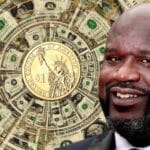Charlie Sheen’s life and career offer a dramatic tale of Hollywood highs and lows, reflected clearly in the story of Charlie Sheen net worth. Known for iconic roles in hit films like Platoon and Wall Street, as well as his unforgettable character in Two and a Half Men, Sheen quickly became one of the highest-paid actors in television history. At his peak, he earned around $1.8 million per episode, propelling his net worth to an estimated $150 million.
However, Sheen’s success came with personal and financial turbulence. As his career advanced, he faced challenges including substance abuse, legal battles, and lavish spending habits that drastically reduced his wealth. Today, Charlie Sheens net worth stands at a modest $10 million.
This article explores the factors that contributed to Charlie Sheen’s net worth, tracing his rise to stardom, his successes, and the significant setbacks that led to his current financial status. His journey not only highlights the risks and rewards of fame but also serves as a cautionary tale about the pressures and pitfalls of life in the public eye.
Charlie Sheen Net Worth, How He Built (and Spent) His Massive Fortune
Discover how Charlie Sheen amassed his massive fortune through iconic roles like “Two and a Half Men” and lucrative endorsements, and uncover the lavish lifestyle and financial choices that shaped his net worth today.
What is Charlie Sheens Net Worth?

As of charlie sheen net worth 2023, Charlie Sheens net worth is estimated at $10 million—a far cry from the $150 million he once boasted at the height of his career. Sheen’s wealth initially soared due to his prominent roles in both film and television, especially with Two and a Half Men. During his time on the show, he became the highest-paid TV actor of his era, reportedly earning $1.25 million to $2 million per episode due to back-end syndication points. These lucrative deals allowed Sheen to amass millions annually, which funded a luxurious lifestyle but also contributed to his downfall.
Sheen’s financial decline began as he faced high-profile legal challenges and increasing health expenses following his HIV diagnosis in 2015. Additionally, he spent millions on substance abuse and settling lawsuits related to his personal life. Despite his once-thriving career, a combination of lavish spending, ongoing legal fees, and decreased income has placed Sheen in what he describes as a “dire financial crisis.” His story is a vivid reminder of the complexities that can accompany fame and fortune.
Loss of Fortune
Charlie Sheen net worth peak represented one of the most impressive fortunes in Hollywood. His vast wealth derived primarily from his role on Two and a Half Men, where he earned upwards of $2 million per episode when factoring in syndication rights. However, as his personal life became more public, his wealth quickly began to deplete. He faced substantial legal and personal expenses, driven by a series of high-profile divorces, child support obligations, and costly legal settlements related to substance abuse and personal controversies.
By 2018, Sheen publicly acknowledged the financial toll of his choices, citing “dire financial stress.” In a court filing, he stated that his monthly income had dropped from its peak of $600,000 to about $167,000 and that he faced $12 million in debt, mostly in mortgages. Sheen also revealed that $10 million had gone to settlements to prevent details of his HIV diagnosis from becoming public. This rapid loss of wealth shows the impact of unchecked spending, legal battles, and the unpredictable nature of Hollywood fame.
Charlie Sheen Salary and Career Earnings

Charlie Sheen worth net rise in Hollywood began with films like Red Dawn and Platoon, but his role as Charlie Harper in Two and a Half Men brought him into an elite income bracket. At the height of his popularity, Sheen was the highest-paid actor on television. His base salary for the show was $1.25 million per episode, and with syndication deals, that figure soared to $2 million per episode. In a standard season of 24 episodes, Sheen’s annual income from this show alone reached $48 million.
However, his earnings were not limited to television. Sheen’s parts in movies like Hot Shots, Major League, and Wall Street brought him millions of dollars!, and his Anger Management deal was structured to potentially earn him millions more if it succeeded in syndication. Unfortunately, that deal failed to yield anticipated profits, leaving Sheen without a substantial windfall. Despite these earnings, ongoing substance abuse costs, legal fees, and personal challenges resulted in a substantial decrease in his financial security.
Key facts and figures of the Charlie Sheen’s net worth and life events:
| Category | Details/Description | Figures/Amounts |
|---|---|---|
| charlie sheen net worth 2024 | Estimated value of charlie sheen worth net as of the latest available data. | $10 million |
| Peak Net Worth | Estimated peak net worth during his career, largely from “Two and a Half Men.” | $150 million |
| “Two and a Half Men” Salary | Highest per-episode earnings on the show. | $1.25 – $2 million per episode |
| Annual Salary at Peak | Estimated annual earnings from “Two and a Half Men” at his peak. | $48 million |
| Earnings from “Anger Management” | Expected syndication earnings from “Anger Management” (not realized due to low demand). | $100 million potential |
| Comedy Tour Earnings | Revenue from the “My Violent Torpedo of Truth” tour. | $1.8 million in two nights |
| HIV Diagnosis and Medical Costs | Medical costs after his HIV diagnosis, including ongoing treatments. | $10 million (estimated) |
| Real Estate (Beverly Hills Mansion) | Purchased a 9,000 sq. ft. mansion in Beverly Hills. | $7.2 million purchase; sold for $6.6 million |
| Total Real Estate Losses | Combined losses from selling several Beverly Hills properties below purchase price. | $1 million+ |
| Legal Obligations (Child Support) | Annual child support paid to ex-wives Denise Richards and Brooke Mueller. | $500,000 each per year |
| Total Debt Claimed in 2016 | Amount of debt reported in court filings. | $12 million |
| Settlement Costs (HIV Disclosure) | Estimated amount spent on settlements to prevent disclosure of his HIV status. | $10 million |
| Monthly Medical Expenses | Monthly costs associated with health care and treatments. | $25,000 |
| Losses from Substance Abuse | Estimated millions spent on drugs, alcohol, and related lifestyle expenses. | Millions (undisclosed total) |
| Golden Globe Award | Won for his role on “Spin City.” | 1 |
| Highest-Paid TV Actor | Record held in 2010 as the highest-paid actor on television. | Yes |
| Public Meltdown | leading to his departure from “Two and a Half Men.” | 2011 |
| Marriage and Divorce Costs | Divorce costs and child support payments over the years with multiple marriages. | Hundreds of thousands annually |
| Total Earnings from Key Movies | Cumulative earnings from notable movies including “Platoon,” “Wall Street,” etc. | $20+ million (estimated) |
| Recurring Income (Syndication) | Estimated earnings from syndication of “Two and a Half Men” episodes. | $250,000 per episode in syndication |
Early Life and Entry into Hollywood
Carlos Irwin Estevez, known professionally as Charlie Sheen, was born on September 3, 1965, in New York City. The son of celebrated actor Martin Sheen and artist Janet Templeton, Sheen grew up surrounded by Hollywood’s influence. His family moved to Malibu, California, where he attended Santa Monica High School. Although he struggled academically, he excelled in baseball and developed an early interest in acting, even making films with friends like Rob Lowe and Chris Penn.
Sheen officially entered the Hollywood scene in 1984 with a role in the Cold War-themed Red Dawn. His breakout came in 1986 with Platoon, directed by Oliver Stone, which won the Academy Award for Best Picture. By establishing himself in films like Wall Street and Young Guns, Sheen solidified his position as one of Hollywood’s rising stars. These early successes laid the foundation for his remarkable career in television and film.
Film Career
Sheen’s film career includes a diverse range of roles, from war dramas like Platoon to comedies such as Hot Shots! and Hot Shots! Part Deux. He became known for his versatility, taking on characters in genres spanning action, drama, and comedy. By the late 1980s, Sheen had starred in iconic films like Young Guns, Eight Men Out, and Major League, with each role adding to his fame and fortune. His portrayal of a stockbroker in Wall Street alongside his father, Martin Sheen, further established him as a leading man.
Though his film career slowed as he transitioned to television, Sheen continued to make memorable appearances in movies. Notably, he starred in The Three Musketeers and made cameos in films such as Ferris Bueller’s Day Off. Despite his shifting focus to television, Sheen’s film legacy remains significant, reflecting a time when he was celebrated for his talent and versatility.
TV Career and Two and a Half Men’s Breakthrough

Sheen’s television career started with Spin City in 2000, where he replaced Michael J. Fox. His portrayal of Charlie Crawford earned him a Golden Globe and solidified his reputation as a talented comedic actor. However, his real breakthrough came with Two and a Half Men, where he played Charlie Harper. Loosely based on his own public image, this role made him a household name and cemented his place in television history.
The show’s massive success led Sheen to become the highest-paid actor on TV, with a salary that made headlines. His tenure on Two and a Half Men spanned eight seasons, earning him four Emmy nominations. The role marked a career high, though it ended abruptly in 2011 after a public feud with show creator Chuck Lorre. His firing marked the start of a turbulent period that affected both his career and finances.
Anger Management Deal and Syndication Issues

Sheen joined FX to work on the series Anger Management after leaving Two and a Half Men.He entered into a 10/90 deal, which would have provided a substantial portion of syndication profits if the first ten episodes maintained high ratings. While this deal had the potential to net him millions, the show’s ratings fell, failing to meet syndication profit expectations.
As a result, Anger Management did not yield the anticipated profits. How wealthy is Charlie Sheen, who received only a fraction of the income he hoped for, and the deal’s failure added to his mounting financial troubles. This experience highlighted the unpredictability of syndication deals and underscored the impact of fluctuating popularity on an actor’s earnings.
Substance Abuse and Health Struggles
Throughout his career, Charlie Sheen battled substance abuse and health challenges that significantly impacted his life and finances. His struggles became widely known in 1998 when he suffered a stroke after an overdose. This incident marked the beginning of a pattern of publicized drug and alcohol issues that led to repeated rehab stays and increasing media scrutiny. In 2015, Sheen publicly revealed he was HIV-positive, a diagnosis he had known about since 2011. This disclosure brought added attention to his health and financial struggles, with estimates suggesting he spent millions on medical expenses.
Sheen’s substance abuse affected his professional reputation, causing him to lose lucrative contracts and endorsements. The personal cost of addiction extended beyond health, impacting his career, relationships, and overall net worth. Sheen’s openness about his battles has raised awareness but also underscored the devastating effects of addiction on a once-thriving Hollywood star.
Marriages, Relationships, and Legal Obligations

Sheen’s personal life has frequently been just as tumultuous as his professional life. His three previous marriages were to Donna Peele, Denise Richards, and Brooke Mueller. His second marriage to Denise Richards resulted in two daughters, while his third with Brooke Mueller led to the birth of twin sons. However, both marriages ended in high-profile divorces that came with significant financial obligations.
After these divorces, Sheen faced steep child support payments, reportedly totaling hundreds of thousands of dollars annually. At one point, his financial situation became so strained that he petitioned the court for reduced child support. In addition to family obligations, Sheen’s relationships with actresses like Kelly Preston and public incidents with other personalities further fueled his public image. His high-profile relationships, costly divorces, and legal fees contributed to the erosion of his once vast fortune, demonstrating how personal challenges can heavily impact financial stability.
Real Estate Investments and Losses
Sheen’s real estate investments have also played a major role in his financial story. At one point, he owned multiple properties in Beverly Hills’ Mulholland Estates, including a 9,000-square-foot mansion that he purchased for $7.2 million in 2006. Known for lavish parties and entertaining, this estate symbolized his high-earning years. However, Sheen eventually sold this mansion at a $600,000 loss in 2020, illustrating his downward financial trend.
In addition to his Mulholland Estates properties, Sheen owned real estate in Agoura Hills, Sherman Oaks, and Cabo San Lucas, Mexico. Financial strain forced him to sell these properties, often at a loss. His ongoing expenses, combined with losses from property sales, further diminished his net worth, highlighting the challenge of maintaining luxury real estate assets during financial hardship.
Cultural Impact and Public Persona

Despite his controversies, Charlie Sheen left an undeniable mark on Hollywood and pop culture. Known for his “tiger blood” and “winning” catchphrases, Sheen’s 2011 public meltdown became a viral sensation, drawing both fascination and criticism. The “Winning” movement and “tiger blood” references were emblematic of Sheen’s personality, one that celebrated rebelliousness but often alienated the industry. His unapologetic approach made him an icon of excess and intrigue, influencing how the public viewed both his career and struggles.
Sheen’s cultural impact extends beyond his television and film roles. He played a significant part in changing public attitudes toward celebrity lifestyles and addiction awareness. His story served as a cautionary tale about fame and fortune’s potential pitfalls, showing how quickly success can unravel. Despite the fallout, Sheen remains a legendary figure in Hollywood, both for his acting and his polarizing off-screen life.
What Does the Future Hold for Charlie Sheen?
Looking forward, Sheen remains hopeful about reviving his career. After years of navigating personal and financial difficulties, he has expressed interest in returning to television and working on new projects. His recent ventures include appearances on reality shows and guest roles, which have helped stabilize his income and keep him connected to his fanbase. While his financial struggles have redefined his lifestyle, Sheen’s resilience and determination continue to drive his ambitions.
The future for Sheen could include a renewed focus on acting, advocacy, and health. Sheen has faced public battles with addiction and health issues. His story resonates with audiences drawn to themes of redemption and personal growth. Although his net worth has drastically declined from its peak, his legacy and cultural impact endure. This offers him an opportunity to shape a new chapter, blending personal insight with his passion for entertainment.
Wrapping Up
Charlie Sheen’s net worth 2024 reflects a story of highs and lows, from his meteoric rise as the highest-paid actor on television to his dramatic financial decline. Known for his iconic roles, Sheen’s career includes legendary performances in Platoon, Wall Street, and Two and a Half Men. Yet, his success was matched by personal and financial challenges, including substance abuse, costly divorces, and missed career opportunities. His journey underscores the unpredictable nature of fame, illustrating how quickly financial stability can erode without careful management.
Ultimately, Charlie Sheen’s legacy lives on as both an entertainer and a complex figure in Hollywood. His wealth and career faced significant setbacks. However, his impact on television and film remains undeniable. Sheen continues to capture the fascination of audiences, leaving a lasting mark in the entertainment world. Regardless of whether he regains his former fortune, his story serves as a powerful reminder of resilience, self-awareness, and adaptability in facing adversity.
How Wealthy is Charlie Sheen?
Charlie Sheen net worth 2024 is estimated to be around $10 million .
Do Charlie Sheen and Emilio Estevez have the same mother?
Yes, Charlie Sheen and Emilio Estevez share the same mother, Janet Templeton, and father, Martin Sheen. Despite having different career paths, both have made notable marks in the entertainment industry.
How many kids does Charlie Sheen have?
Charlie Sheen has five children from different relationships. He has two daughters with actress Denise Richards and twin sons with Brooke Mueller. Additionally, he has an older daughter from a previous relationship in the 1980s.
How did Charlie Sheen’s lifestyle impact his finances?
Charlie Sheen’s high-profile lifestyle, including his spending on real estate, lavish parties, and substance use, contributed heavily to his financial decline. Combined with legal issues and health costs, this lifestyle gradually diminished his net worth, ultimately leading to financial struggles.
Does ‘Two and a Half Men’ repeats still bring in money for Charlie Sheen?
Yes, Charlie Sheen reportedly continues to earn from the syndication of Two and a Half Men. While his earnings per episode have decreased since his departure, syndication royalties remain a source of passive income for him.
Is Charlie Sheen still involved in real estate?
After selling multiple properties in Beverly Hills and Agoura Hills, Charlie Sheen currently resides in a rented home in Malibu. He has sold most of his Los Angeles properties and now maintains a more modest real estate profile.
What health challenges has Charlie Sheen faced?
Charlie Sheen has publicly shared his HIV-positive diagnosis, which he revealed in 2015. This diagnosis has led to considerable medical expenses and lifestyle adjustments, including advocacy work for HIV awareness and treatment.

William James is an experienced blogger with a passion for writing informative, easy-to-read content. As the voice behind Florida Radiant, William shares his knowledge on a wide range of topics, making complex ideas simple for readers. His goal is to provide valuable insights that are accessible to everyone, helping readers stay informed and engaged.







